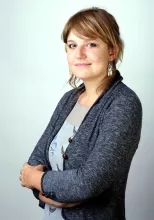
Cracking the Earthquake Code - Digital Twins for Earthquake Physics
This plenary session is part of the Artificial Intelligence and Digital Twins for Earth Systems workshop co-hosted by USACM and the Oden Institute for Computational Engineering and Sciences at UT Austin.
Abstract: Earthquakes remain one of nature’s most unpredictable and destructive phenomena, occurring right beneath our feet. They, and their secondary hazards including tsunamis, cannot be predicted but can cause severe casualties and hundreds of billions to trillions of dollars in losses even in well-prepared societies.
Earthquakes are governed by highly nonlinear dynamics and vary in size over many orders of magnitude. Recent large events, such as the 2023 Turkey earthquakes, ruptured in complex multi-fault and multi-event sequences, “jumping” from one segment of a geologic fault system to another, “communicating” via subsurface stress transfers and rupturing at 'supershear' speeds, faster than theoretically plausible. Despite dense seismic and geodetic networks and the large number of observed earthquakes, a predictive, physics-based understanding of the earthquake system remains elusive. A fundamental gap persists between long-term earthquake hazard assessment (decades to centuries), where hazard is approximated as time-independent, and operational statistical aftershock forecasting after large events.
We are entering a transformative era for earthquake science, driven by the integration of high-performance computing, dense observational data, large-scale physics-based modeling, and data science methodologies to develop digital twins (DTs) of earthquake systems: computational analogs dynamically updated with real-time observational data streams, designed to represent the complex behavior of earthquake processes for predictive decision-making. I will present physics-based forward and inverse models, closely integrated with interdisciplinary observations and utilizing supercomputing, that elucidate the complicated rupture dynamics of recent large earthquakes toward a comprehensive, physically consistent understanding of the mechanics of faults. However, none of the existing supercomputing methods are efficient enough for real-time (early warning) or full physics-based probabilistic seismic hazard assessment (routinely evaluating 10,000s of complex models). Instead, the output of high-fidelity models can be used to construct time-dependent reduced-order model, a low-dimensional and accurate approximation of the earthquake forward simulations, that is fast enough to rapidly evaluate new earthquake scenarios for rapid response and physics-based probabilistic seismic hazard assessment.
These components pave the way toward digital twins that not only simulate but anticipate seismic behavior in complex tectonic environments. The nonlinear and transient nature of earthquake systems provides natural testbeds to develop new ways of analyzing complex dynamics through DTs that can be generalized across Earth and engineering sciences.
Speaker Bio: Alice Gabriel is a seismologist combining physics-based computer simulations, routinely utilizing the largest supercomputers worldwide, with data-driven techniques and theoretical analysis to tackle one of the grand challenges of seismology: uncovering the physical mechanisms relevant to understanding earthquakes. Her research bridges space-time scales as well as disciplines within Geophysics and with Computer Science and Applied Mathematics. She aims to harness the full breadth of Earth observations integratively with novel modeling approaches. This entails studying a range of geophysical problems with multi-physics character.